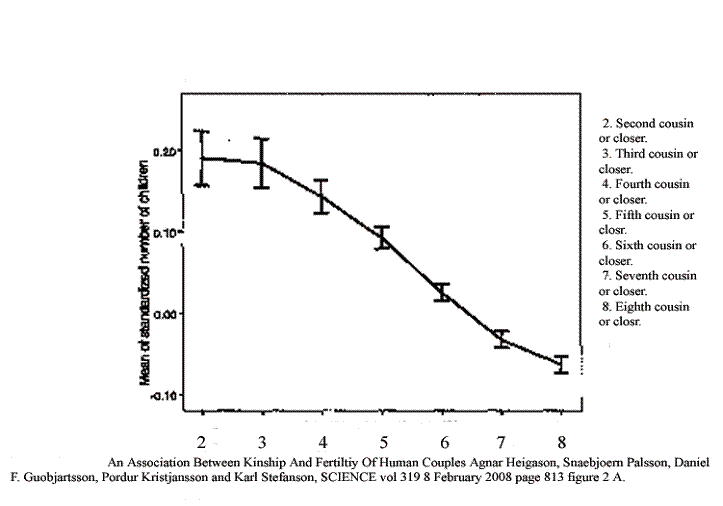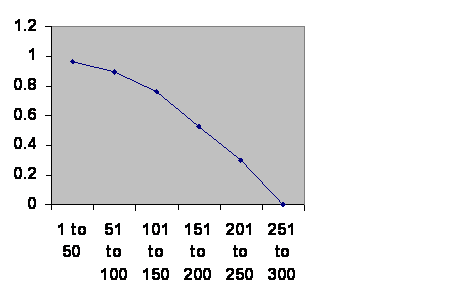March 20, 2014
Gregory Clark
1137 Social Sciences and Humanities Building
University of California at Davis
Davis, California
530 574 7188
gclark@ucdavis.edu
(sent as an attachment as there are graphs)
Dear Professor:
I am enamored of Farewell to Alms, and was thrilled to learn that that you had written Gregory Clark The Son Also Rises Princeton University Press, Princeton and Oxford copyright 2014. I read with gusto and amazement; it will be a long time before I have thought through the implications.
You enunciate a new law of nature: the ultimate social accomplishments of a person are determined only by those of the parents with a small random component. 80 % is predictable. Thus social mobility, despite common superstition, is very slow with centuries required for the post prestigious members of a country to regress to the mean whereupon they are indistinguishable from average. This extraordinary claim you support with extraordinary evidence, and I am convinced. I know of only one family that departs from your pattern.
Let me respond with my own law: the fertility of a couple is determined only by the consanguinity of the recent ancestors with a small random component. These two are not in conflict, and indeed both lead to the conclusion that endogamy is no bad thing, although the endogamy I see is on a much smaller scale than you describe.
You suggest, with powerful evidence, that the mechanism is genetic. Perhaps one day when there are designer babies parents will insist on the plutocrat gene, or rather your gene or genes that promote general social competence. I believe that my mechanism is epigenetic, but as for yours I cannot say. I shall attach a paper I was involved in that gives my own data and reasoning.
Let me give some more evidence. Here is a study from Iceland comparing shared ancestors with number of offspring.

An Association between Kinship and Fertility of Human Couples Agnar Helgason et al. SCIENCE vol. 329 no. 5864 February 8, 2008 page 813 – 816
The effect is rather modest, but they followed it into the second generation and found an almost identical curve, except that there was a degree of inbreeding depression once one got closer than second cousins. Here is a link to my most recent summary: http://www.nobabies.net/A%20January%20summary.html
More recently there was a study done in Sweden: Low fertility increases descendant socioeconomic position but reduces long-term fitness in a modern post-industrial society Proc. R. Soc. B 2012 279, 4342-4351 first published online 29 August 2012 Anna Goodman, Ilona Koupil and David W. Lawson. It showed essentially the same thing for two generations. In this case they did not look at kinship but at wealth, but I take it as axiomatic that the rich – except for the English leading into the 19th century while they were becoming the super power – marry to those less closely related to themselves than do poor people. This last paper shows a decline in fertility in the third generation that was more than the first two combined. One can only shudder to think what the result of outbreeding obstinately and consistently pursued would be in the fourth and fifth generations if there indeed would be a fifth generation.
I am intrigued by your analysis of what the most elite nationalities are in the United States. To recite your list they are:
Copt
Hindu
Indian Christian
Iranian Muslim
Maronite
Ashkenazi
Sephardim
Korean
Chinese
Filipino
Black Africa
Greek
Armenian
Japanese
Vietnamese
Black Haitian
As luck would have it, there was an article recently (Planet Plutocrat ECONOMIST vol. 410 no. 8878 March 15, 2014 page 57) describing a global tendency for certain people to engage in “rent seeking.” That means asking cronies with political power for favors that result in the gain of great wealth. We used to call it graft, but one does not call a billionaire a common thug – bad for the complexion, don’t you know?
They developed a “crony-capitalism index.” From greatest to least (stopping at the US) they are:
Hong Kong
Russia,
Malaysia
Ukraine
Singapore
Philippines
Mexico
Taiwan
India
Indonesia
Argentina
South Africa
Brazil
Turkey
Britain
Thailand
If there is a relationship between the two lists, I see it not. The point is that some might murmur that rich though these guys are, they are not really good families.
The thing I find most troubling is exemplified by this graph:

Information taken from R. H. Carling THE WORLD HISTORY CHART International Timeline Inc. Vienna, VA 1985. The experience of Southern Mesopotamia. The vertical axis is The chance of an empire of any age continuing to rule locally for another 50 years. The horizontal axis is the ages of the empires.
The implication is that societies die. There is a brick wall (scaled by Britain, sometimes Egypt and once by the Mycenaean Greeks) at 300 years. Were the mechanism something within a society the line would go up as the weaker died out first. Were it outside the society, the line would be horizontal as the end would be unrelated to the beginning. What seems to be the case is that a component of each society is dying out because of exogamous marriages. In other words there is a component of the population, a component that is not the poorest, who are pretty well stuck marrying the cousin next door, that is vital to the survival of the society.
In other words there is a general social competence that not only permits the person to flourish with a society but that permits the society to flourish.
You propose that for a group of elite to survive, they should practice endogamy so as not to regress to the mean. I think there is also an argument that they should practice endogamy so as not simply to die out. But I don’t see it happening.
What do you think?
Sincerely,
M. Linton Herbert MD
There have been 113 visitors over the past month.
Home page.

